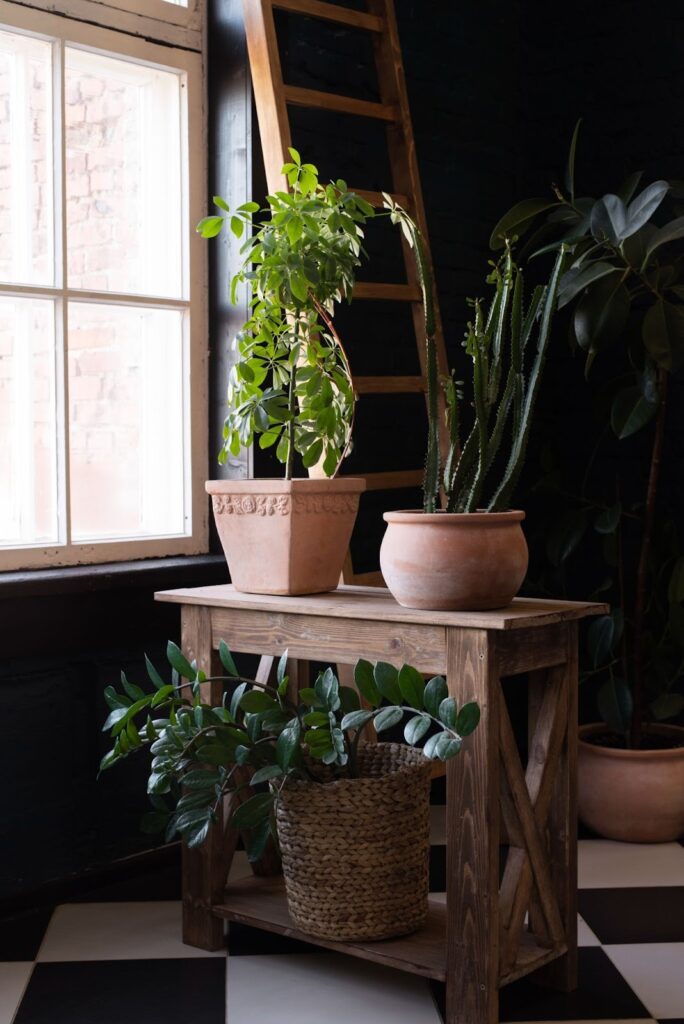2026 Interior Design Forecast: Black Pebble Designs Predicts Mangalore’s Trending Styles

The coastal city of Mangalore has always had its own rhythm when it comes to interior design. Unlike the rapid-fire trend cycles of metro cities, this port town absorbs global influences slowly, filtering them through its humid climate, traditional sensibilities, and increasingly cosmopolitan aspirations. As we head into 2026, the shift feels different. More deliberate. More grounded in what actually works for homes that face six months of monsoon and residents who want spaces that feel both contemporary and rooted.
After spending years observing how Mangalorean homes evolve, certain patterns become clear. The city’s design trajectory isn’t about chasing Instagram aesthetics. It’s about creating interiors that withstand relentless moisture, accommodate three generations under one roof, and still feel modern enough for young professionals moving back from Bangalore or Dubai. The upcoming trends for 2026 reflect this practical wisdom while embracing genuine aesthetic innovation.
Earthy Minimalism Takes Centre Stage
Maximalism had its moment, but Mangalore never fully committed to it anyway. The 2026 forecast points towards a refined minimalism that doesn’t feel cold or austere. Think warm terracotta walls paired with clean-lined furniture, exposed concrete beams softened by handwoven textiles, natural stone surfaces that age beautifully in humid conditions.
This shift makes practical sense. Homes here accumulate moisture and dust differently than apartments in drier climates. Fewer decorative elements mean less maintenance, but the quality of what remains becomes crucial. A single statement piece of Coorg rosewood furniture carries more weight than five mediocre items. One large brass Deepa Stambha in the prayer room creates more impact than a cluttered shelf of trinkets.
The colour palette accompanying this minimalism runs darker and more saturated than previous years. Burnt umber, deep olive, charcoal grey balanced with warm whites and natural wood tones. These colours hide the inevitable staining that high humidity brings whilst creating spaces that feel grounded and substantial. Light pastels, popular in 2023 and 2024, proved impractical for homes battling mildew and salt air corrosion.
Biophilic Design Goes Beyond Token Plants
Indoor greenery isn’t new to Mangalorean homes. Every grandmother has cultivated tulsi and money plants for decades. What changes in 2026 is the sophistication of integration. Entire walls given over to vertical gardens with proper irrigation systems. Atriums designed from the planning stage to flood specific areas with natural light for indoor trees. Bathrooms incorporating live moss walls that actually thrive in the steam rather than merely survive.
This evolution matters because Mangalore’s climate makes it uniquely suited for ambitious biophilic design. Plants that struggle in air-conditioned Gurgaon apartments flourish here. Ferns, areca palms, anthuriums, philodendrons grow almost aggressively with minimal care. Forward-thinking homeowners are finally treating this as an advantage rather than fighting it.
The structural changes required for proper biophilic design also force better ventilation planning. Homes being renovated in 2026 include more operable windows, higher ceilings in wet areas, and strategic placement of exhaust systems. The greenery looks beautiful, but the real benefit comes from improved air circulation and natural humidity control.
Multi-Functional Spaces Reflect Changing Family Dynamics
The traditional Mangalorean home had clearly defined rooms: formal sitting room for guests, separate dining area, individual bedrooms, a prayer room. The 2026 home blurs these boundaries intelligently. Guest bedrooms transform into home offices with Murphy beds. Dining tables extend workspace during the day. Balconies get weatherproofed and enclosed to create year-round usable square footage.
This flexibility responds to real needs. Adult children return from other cities expecting to work from home. Aging parents need ground-floor spaces that can accommodate medical equipment if required. Joint families need privacy zones within shared homes. The solution isn’t just about furniture that folds or slides, but about designing rooms with multiple electrical points, varied lighting schemes, and acoustic separation despite open layouts.
Mangalore interior designers Black Pebble Designs have observed this shift firsthand, noting that clients increasingly request adaptable spaces that can evolve with their family’s needs over a decade rather than static rooms that might become obsolete in three years.
Regional Craft Gets Contemporary Expression
Mangalorean homes have always featured local craftsmanship, but often relegated to traditional contexts: rosewood furniture in the prayer room, stone carvings at the entrance, bronze lamps for festive occasions. The 2026 trend integrates these crafts into thoroughly modern settings.
Kavaad work panels installed as bedroom headboards. Traditional terracotta tile patterns reinterpreted in modern bathrooms using smaller formats and unexpected colour combinations. Wooden ceiling treatments inspired by old Nair tharavads but executed with sleek, minimal detailing. Brass metalwork appearing in contemporary light fixtures and minimalist door hardware.
This isn’t preservation for nostalgia’s sake. It’s about recognising that local artisans have spent generations solving specific problems: keeping wood from warping in humidity, creating tiles that don’t become slippery when wet, developing finishes that withstand salt air. Their solutions work better than imported alternatives, look distinctive, and support skilled craftspeople in surrounding villages.
The challenge lies in execution. Traditional craftsmen often struggle to translate their skills into modern design vocabulary. Successful projects require designers who can bridge that gap, spending time explaining contemporary aesthetics whilst respecting traditional techniques. The results, when done properly, feel both timeless and current.
Smart Technology Integrated Invisibly
Mangalore has been slower than tier-one cities to adopt home automation, partly due to concerns about maintenance and reliability in humid conditions. That hesitation is fading. The 2026 home includes smart climate control, automated lighting, integrated sound systems, and app-controlled security, but executed so subtly you wouldn’t immediately notice.
The key difference from previous years is reliability. Earlier smart home installations often failed within months, corroded by moisture or rendered useless by power fluctuations. Current systems account for these conditions with marine-grade wiring, proper earthing, voltage stabilisation, and components rated for tropical climates.
Voice control and automated systems also accommodate the multilingual reality of Mangalorean homes. Systems responding to Konkani, Tulu, or Kannada commands alongside English. Lighting scenes programmed for cultural contexts: automatically adjusting for Ashtami puja in the evening or ramping up for afternoon study hours.
The visual expression remains minimal. No visible smart panels or control screens cluttering walls. Everything operates through phones, voice commands, or elegant switches that look traditionally styled but control complex systems behind the walls.
Wet Area Design Prioritises Genuine Waterproofing
Every Mangalorean homeowner has bathroom horror stories. Seepage, tile grout blackening with mould, permanent water staining, that distinctive smell of trapped moisture. The 2026 forecast shows a fundamental rethinking of how wet areas are constructed and finished.
Proper tanking with multiple waterproof layers before any tile work. Adequate slope in floors for drainage. Wall-hung toilets and vanities that leave floor areas accessible for cleaning and maintenance. Ventilation systems that actually exchange air rather than just recirculate it. Materials chosen for performance rather than just appearance.
The aesthetic follows function. Large-format tiles with minimal grout lines. Stone surfaces sealed properly from day one. Glass partitions instead of shower curtains. Recessed lighting instead of surface-mounted fixtures that trap moisture. These choices create bathrooms that genuinely stay dry and clean in Mangalore’s climate.
High-end projects are incorporating Japanese-style wet rooms with entire floors designed to drain, eliminating the concept of “outside the shower” altogether. This radical approach suits the climate perfectly and ages far more gracefully than conventional bathroom layouts.
Kitchen Design Balances Tradition and Modernity
The Mangalorean kitchen serves different masters than its Western counterpart. It needs to handle elaborate traditional cooking for festivals whilst accommodating quick weekday meals. It must store large quantities of pickles, rice varieties, and grinding stones alongside modern appliances. It remains a grandmother’s domain even when a younger generation wants contemporary aesthetics.
The 2026 kitchen resolves these tensions through zoning. A traditional wet section with granite counters and floor-level platforms for specific cooking tasks. A modern dry section with modular cabinets and built-in appliances. Adequate ventilation throughout because the amount of smoke and steam generated by authentic Mangalorean cooking overwhelms standard chimneys.
Storage solutions reflect actual usage: deep drawers for heavy pots, climate-controlled sections for spice storage, pull-out platforms for grinding attachments. The industrial aesthetic popular elsewhere doesn’t translate here. Mangalorean kitchens need warm materials that don’t corrode, surfaces that hide turmeric stains, and layouts that accommodate multiple cooks working simultaneously during festivals.
Outdoor Spaces Get Serious Weather Protection
Balconies and terraces in Mangalore have traditionally been afterthoughts, too hot and bright in summer, too wet during monsoon. The emerging trend treats these as genuine living spaces through serious weather engineering.
Retractable glass or polycarbonate panels that can enclose spaces during heavy rain. Proper shading systems that block harsh sun without cutting off breezes. Drainage systems that handle tropical downpours. Flooring materials that don’t become slippery when wet or unbearably hot in direct sun.
The investment pays off in usable square footage. A properly designed 200-square-foot balcony becomes genuine living space rather than just a spot to dry clothes. Families actually eat breakfast outside in December, host evening gatherings in October, or work from these transitional spaces year-round.
Vegetation plays a crucial role. Climbing plants on trellises provide natural cooling and privacy. Potted trees create shifting shade patterns. Herb gardens add function to the aesthetics. These aren’t token green touches but fundamental elements of making outdoor spaces livable in tropical conditions.
The broader picture emerging from these trends shows Mangalore developing its own design vocabulary. Not copying Bombay’s Art Deco revival or Bangalore’s villa modernism, but creating something specific to its climate, culture, and increasingly sophisticated aesthetic expectations. The successful homes of 2026 will be those that respect regional realities whilst embracing genuine innovation where it serves the people living inside them.



